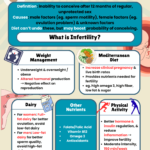According to WHO, an estimated 240 million people are chronically infected with hepatitis B; highest prevalence in sub-Saharan Africa and East Asia where 5-10% of the adult population is chronically infected. More than 686000 people die each year due to complications of Hepatitis B, ie liver cirrhosis and liver cancer.
Hepatitis B is a viral infection that attacks the liver and can cause both acute & chronic liver disease. The virus is transmitted through contact with blood or body fluids of the infected person. It is most commonly spread from mother to child at birth or from an infected child to uninfected child during the first 5 years of life. It is also spread by percutaneous @ mucosal exposure to infected blood or body fluids ie saliva, menstrual, vaginal and seminal fluids. Transmission of the virus may also occur during medical, surgical and dental procedures, tattooing and sharing of razors @ similar objects contaminated with infected blood.
20-30% of adults who are chronically infected will develop liver cirrhosis and/or liver cancer
Lab diagnosis of Hepatitis B infection focuses on detection of the Hepatitis B surface antigen. Chronic infection is defined as hepatitis B surface antigen positive for at least 6 months.
Chronic hepatitis B can be treated with drugs which can slow the progression of cirrhosis, reduce incidence of liver cancer and improve long term survival. In most people, the treatment does not cure hepatitis B infection, but only suppresses the replication of the virus. Therefore, most people who start hepatitis B treatment must continue it for life.
PREVENTION
The Hepatitis B vaccine is the mainstay of hepatitis B prevention. This vaccine has been available since 1982 and is 95% effective in preventing infection and the development of chronic disease and liver cancer due to hepatitis B.
Desiderius Erasmus once said,
“Prevention is better than cure”
Anne Wojcicki also said,
“One of the best aspects of healthcare reform is it
starts to emphasize prevention”






